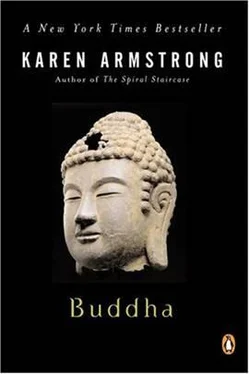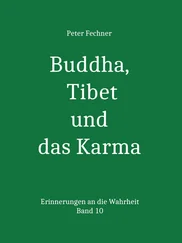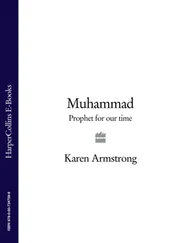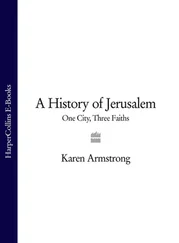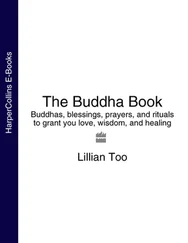But Ananda was still struggling. “Lord,” he cried, “do not go to your Final Rest in this dreary little town, with mud walls; this heathen, jungle outpost, this backwater.” The Buddha had spent the greater part of his working life in such great cities as Rajagaha, Kosambi, Savatti, and Varanasl. Why could he not return to one of these cities, and finish his quest surrounded by all his noble disciples, instead of dying here alone, among these ignorant unbelievers? The texts show that the early Sangha was embarrassed by the obscurity of Kusinara and the fact that their Teacher died far away in the jungle. The Buddha tried to cheer Ananda, pointing out that Kusinara had once been a thriving city and the great capital of a cakkavatti. But the Buddha’s choice of Kusinara almost certainly had a deeper reason. No Buddhist could ever rest on past achievements; the Sangha must always press forward to bring help to the wider world. And a Buddha would not see a dismal little town like Kusinara in the same way as would an unenlightened man. For years he had trained his conscious and his unconscious mind to see reality from an entirely different perspective, free from the distorting aura of egotism that clouds the judgment of most human beings. He did not need the external prestige upon which many of us rely in order to prop up our sense of self. As a Tathagata, his egotism had “gone.” A Buddha had no time to think of himself, even on his deathbed. Right up to the last, he continued to live for others, inviting the Mallians of Kusinara to come to the grove in order to share his triumph. He also took the time to instruct a passing mendicant, who belonged to another sect but was drawn to the Buddha’s teaching, even though Ananda protested that the Buddha was ill and exhausted.
Finally, he turned back to Ananda, able with his usual sympathy to enter into his thoughts. “You may be thinking, Ananda: ‘The word of the Teacher is now a thing of the past; now we have no more Teacher.’ But that is not how you should see it. Let the Dhamma and the Discipline that I have taught you be your Teacher when I am gone.” He had always told his followers to look not at him but at the Dhamma; he himself had never been important. Then he turned to the crowd of bhikkhus who had accompanied him on this last journey, and reminded them yet again that ‘All individual things pass away. Seek your liberation with diligence.”
Having given his last advice to his followers, the Buddha fell into a coma. Some of the monks felt able to trace his journey through the higher states of consciousness that he had explored so often in meditation. But he had gone beyond any state known to human beings whose minds are still dominated by sense experience. While the gods rejoiced, the earth shook and those bhikkhus who had not yet achieved enlightenment wept, the Buddha experienced an extinction that was, paradoxically, the supreme state of being and the final goal of humanity:
As a flame blown out by the wind
Goes to rest and cannot be defined,
So the enlightened man freed from selfishness
Goes to rest and cannot be defined.
Gone beyond all images-
Gone beyond the power of words.
Ahimsa: “Harmlessness”; the ethic adopted by many of the ascetics of North India to counter the aggression of the new states.
Akusala: “Unskillful” or “unhelpful” states, which will impede the quest for Enlightenment.
Anatta: “No-Soul”; the doctrine that denies the existence of a constant, stable and discrete personality.
Arahant: An ‘Accomplished One,’ who has attained Nibbana.
Arama: Pleasure-park donated to the Buddhist Order for a settlement.
Asana: The correct position for yogic meditation, with straight back and crossed legs.
Avasa: Rural settlements, often built from scratch each year by the Buddhist monks, for the monsoon retreats.
Atman: The eternal, unchangeable Self sought by the yogins, ascetics and followers of the Samkhya philosophy. It was believed in the Upanisads to be identical with brahman .
Ayatana: Meditative planes achieved by a very advanced yogin.
Bhikkhu: An “almsman,” a mendicant monk who begs for his daily food; the feminine form is bhikkhuni: nun.
Bodhisatta: A man or woman who is destined to achieve enlightenment. Sanskrit: boddhisatva.
Brahman: The fundamental, supreme and absolute principle of the cosmos in Vedic and Upanisadic religion.
Brahmin:A member of the priestly caste in Aryan society, responsible for sacrifice and the transmission of the Vedas.
Brahmacariya:The holy life of chastity, the quest for enlightenment and liberation from pain.
Buddha:An Enlightened or Awakened person.
Cakkavatti:The World Ruler or Universal King of Indian folklore, who would govern the whole world and impose justice and righteousness by force.
Ceto-vimutti:The “release of the mind”; a synonym for enlightenment and the achievement of Nibbana.
Dhamma:Originally, the natural condition of things, their essence, the fundamental law of their existence; then: religious truth, the doctrines and practices that make up a particular religious system. Sanskrit: dharma.
Dharana:A yogic term: “concentration.” A process of internal visualization, during which the yogin becomes conscious of his own consciousness.
Dukkha:‘Awry, flawed, unsatisfactory”; often simply translated as “suffering.”
Ekagrata:In yoga, the concentration of the mind “on a single point.”
Gotami:The name of any woman belonging to the Gotama tribe.
Iddhi:The dominion of spirit over matter; the “miraculous” powers thought to come with proficiency in yoga, e.g., levitation or the ability to change shape at will.
Jhana:A yogic trance; a current of unified thought that deepens in four distinct stages. Sanskrit: dhyana.
Jina:A conqueror, an honorary title of Buddha, used by Jains.
Kamma:Actions; deeds. Sanskrit: Karman.
Khandha:“Heaps, bundles, lumps”; the constituents of the human personality in the Buddha’s theory of anatta. The five “heaps” are body, feelings, perception, volition and consciousness.
Ksatriya:The caste of warriors, noblemen and aristocrats responsible in Aryan society for government and defense.
Kusala:The “skillful” or “helpful” states of mind and heart that Buddhists should cultivate in order to achieve enlightenment.
Nibbana:“Extinction; blowing out”: the extinction of self which brings enlightenment and liberation from pain ( dukkha ) . Sanskrit: Nirvana.
Nikaya:“Collections” of discourses in the Pali Canon.
Niyamas:The bodily and psychological disciplines which are a prerequisite for yogic meditation.
Pabbajja:“Going Forth”; the act of renouncing the world in order to live the holy life of a monk. Later, the first step in Buddhist ordination.
Pali:The North Indian dialect used in the most important collection of Buddhist scriptures.
Parinibbana:The “Final Nibbana”; the final rest of an enlightened person achieved at death, since he or she will not be reborn into another existence.
Читать дальше
